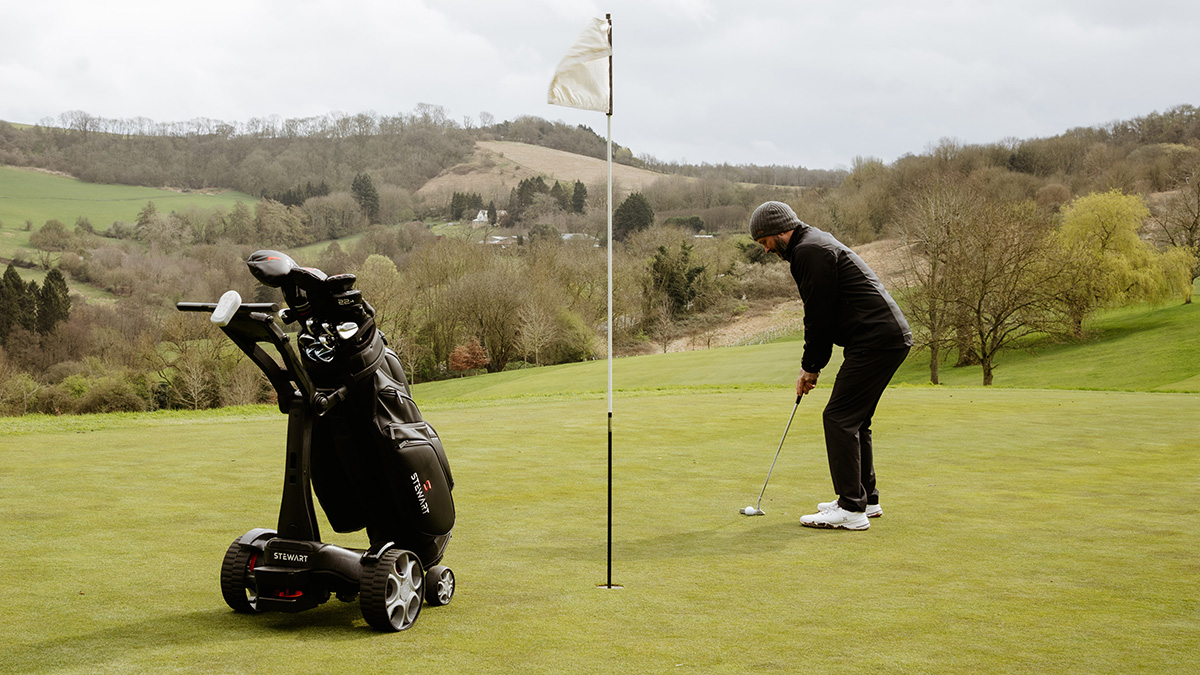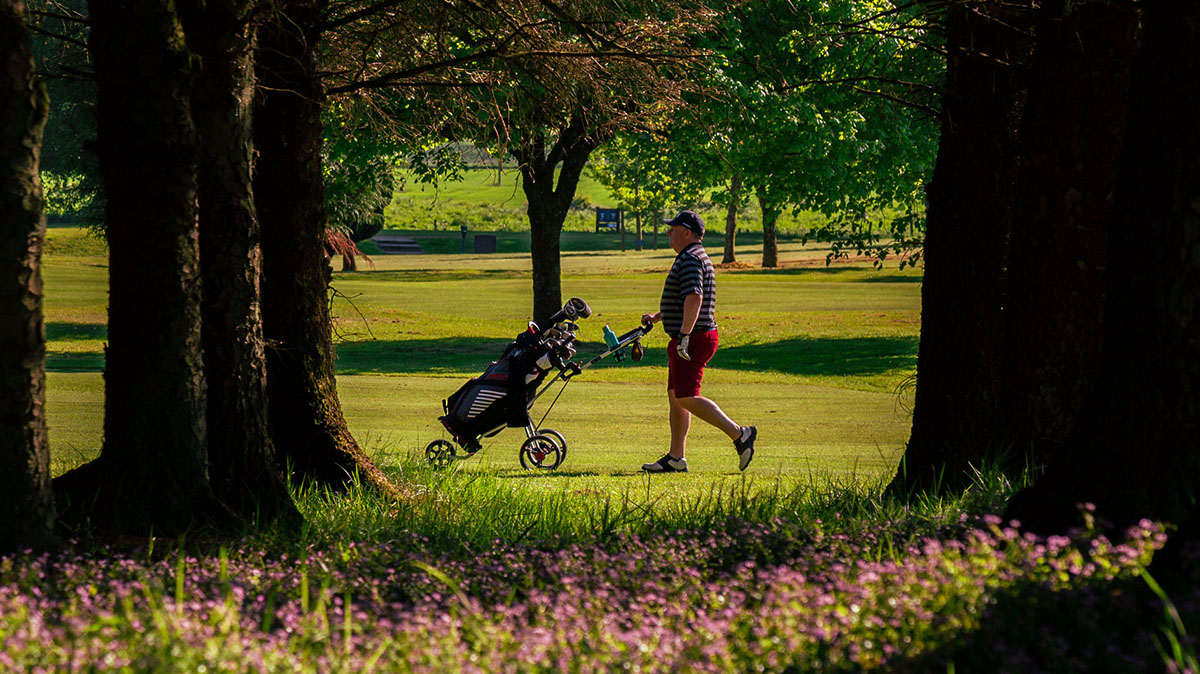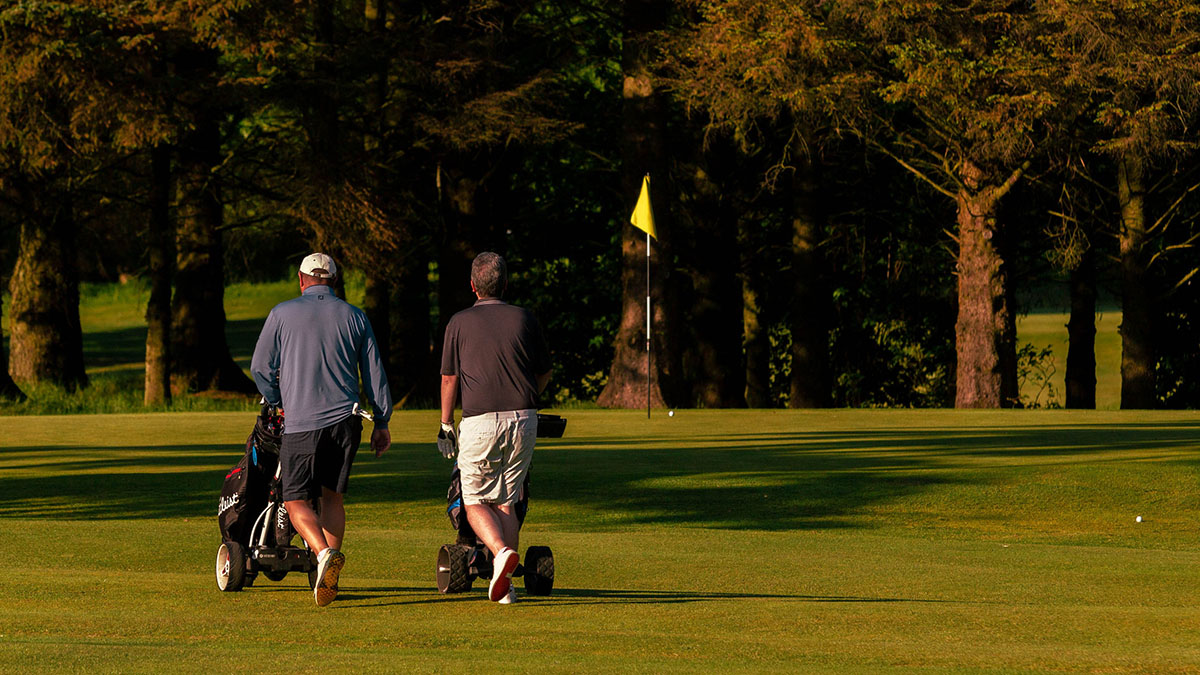- Homepage
- News and Features
- How to avoid upsetting your greenkeepers when using push trolleys
How to avoid upsetting your greenkeepers when using push trolleys
Trolleys are great. Not having to carry a heavy bag makes the game so much more accessible and enjoyable to countless golfers. They also do a good job of holding drinks, umbrellas, snacks and plenty of other amenities to make your round a little more comfortable.
Most of the time, golf trolleys and greenkeepers get on well as they cause far less damage than ride-on golf buggies have the potential to. But every now and then, we see something we wish we hadn’t – and when a greenkeeper’s first thought is about creating the best playing surface possible, you know there’s a good reason they’re upset.

Here are 10 tips for good golf trolley etiquette:
1. Keep at least 15 feet from the edge of tees or greens. Thirty feet is the USGA Green Section’s recommended distance, but UK golf courses are often compact, making this difficult. What’s important is that you stay off the two most hard-wearing areas of the course – the tees and greens. These receive the most traffic and are the costliest to repair, so it’s important to limit damage wherever possible.
2. Likewise, avoid using your trolley in critical play areas such as approaches, surrounds and banking beside greens as this will prevent additional wear and tear that leads to unsightly bare ground or muddy, rutted surfaces.
3. Take your trolley around the outside edge of greenside bunkers, rather than the narrow gap between the green and surrounding bunker. This is a particularly high traffic area and that combined with sand splashes from the bunker means the surface is at extra risk of damage. Where there are high-sided bunkers it can also be pretty unstable, so pulling a trolley there can be unsafe.

4. If cart paths are available, use them as much as possible. Hard pathways are better suited for buggies and trolleys than the fine turf used on golf courses, which take years of training to maintain.
5. Show courtesy to the group behind you by parking your trolley in the direction you’ll leave on your way to the next hole. That’s just one way to speed up play around the course.
6. Try to avoid excessively wet areas around the course. These can be depressions or low points in the fairway, but any time you can hear water squelching under the wheels, the chances are you’re causing damage to the golf course that may take a long time to repair, which leads us on to our next point…

7. Trolleys are great, but avoid using them in winter if you can. Not only is the course generally wetter, but any hills are going to be slippery so there’s the risk of falls. Under heavy frost the weight of your trolley can also potentially damage the turf. In winter the grass is largely dormant, so it recovers slowly and the damage just piles up. Instead, carry if you’re able and make things easier for yourself by taking fewer clubs or using a pencil bag.
8. Follow guidance left out by the greenkeepers and don’t walk onto roped off areas or pass directional signs. We call this traffic management, where we direct golfers around the course as a means of preventing damage or giving damaged areas the opportunity to heal. There may be safety reasons for stopping you from accessing an area or in cases such as Ground Under Repair, there may have been restorative work that needs time to recover.
9. Although today’s trolley manufacturers usually adhere to regulations when it comes to the design of their products, this isn’t always the case. Only purchase trolleys that have wide wheels (approximately 4 inches or more) as the weight dispersion helps prevent damage.
10. Finally, if it’s been raining heavy or there have been persistently wet conditions and the golf club has suspended or restricted the use of trolleys, please don’t use them. The greenkeeping team always acts with the long-term health of the golf course in mind, so leave the trolley in the shed for today, if you can.
This article was produced by the British & International Golf Greenkeepers Association in collaboration with Stewart Golf.
Author

Karl Hansell
Karl has been head of communications for BIGGA since March 2016. His duties include editing the monthly Greenkeeper International magazine, in addition to other communications activities for the association.
